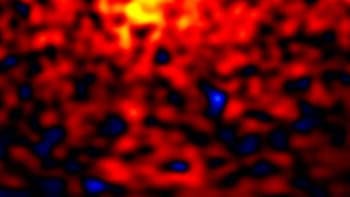By Jon Cartwright
The debate as to whether the DAMA/LIBRA team has detected dark matter, as it claimed in April, will no doubt persist until fresh data can say either way. But in the meantime, Robert Foot, a physicist from the University of Melbourne, suggests an alternative interpretation: “mirror matter”.
I’ll take a step back for a moment in case you aren’t familiar with the story. (Alternatively, you can see Physics World’s feature DAMA/LIBRA is an underground experiment based at the Gran Sasso laboratory in Italy. It looks for dark-matter particles known as WIMPs (weakly interacting massive particles) — a class favoured by theorists for the mysterious substance — by monitoring for flashes that occur when the particles collide with nuclei in 250 kg of sodium-iodide detectors. The idea is that the frequency of flashes should modulate over the year as the Earth changes its speed through our galaxy’s “halo” of dark matter: in June, when the Earth’s orbit takes us faster through the halo, one would expect to see more flashes; in December, when we are moving slower, one would expect to see fewer.
This seasonal modulation is just what the DAMA/LIBRA team presented in April. In fact, it’s just what the team presented in 2003, 2000 and 1998, too, but the most recent signal is at an unprecedented confidence level (8.2 standard deviations). The DAMA/LIBRA team insist that the modulation is evidence for dark-matter WIMPs. Others — particular those whose experiments who have not found any evidence in overlapping mass regions, such as CDMS in the US and XENON, also at Gran Sasso — disagree. (It should be noted that the DAMA/LIBRA team thinks that the different approach taken by these experiments is to blame for their lack of evidence.)
Foot’s interpretation, which builds on an analysis he performed on the 2003 DAMA data, offers a means to reconcile these viewpoints (Phys. Rev. D 78 043529. In theory, there could be a mirror particle for every particle in the Standard Model of particle physics. Unlike all known particles, which only obey rotational and translational symmetry, mirror particles would also obey reflectional symmetry. Moreover, mirror matter would only interact with normal matter weakly, making it an ideal candidate for dark matter.
So how can mirror matter explain the discrepancy in signals between DAMA/LIBRA and other dark-matter experiments? There are two main properties. First, the interaction rate of mirror matter would depend on the energy of the nuclear recoils produced by the collisions, which varies from experiment to experiment. DAMA detects a signal between 2–4 keV, whereas, for example, CDMS is only sensitive to recoils greater than 10 keV. Theory predicts that the interaction of mirror matter would go down as recoil energy goes up — so, says Foot, mirror matter would not be detected by experiments like CDMS.
Second is that the distribution of mirror matter in the galactic halo would be different to WIMP dark matter. Potentially, every mirror particle would be a dark-matter particle, and their combined distribution would veer towards lower velocities. With fewer high-velocity particles, says Foot, there would be fewer high-energy recoils.
Taking all this into account, Foot calculates that dark matter consisting of helium or hydrogen mirror particles with a small component of oxygen mirror particles would give a signal for DAMA/LIBRA while giving no signal for CDMS, XENON, etc.
I e-mailed Rita Bernabei, spokesperson for the DAMA/LIBRA experiment, to ask what she thought of the idea of mirror dark matter. “As stressed many times,” she replied, “many possible dark matter candidates can fit our model-independent observations; mirror dark matter is one of them.”



